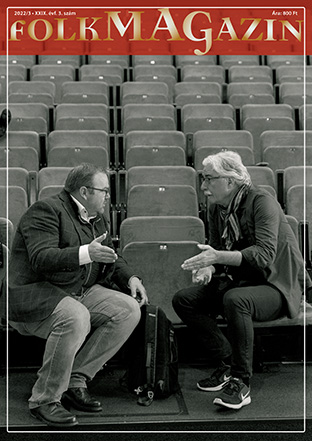Articles by Initial Letters
„Nekem hivatásom a tánctanítás”
Interjú György Károllyal
- Issue: 2022/3
- Starting page: 15
- Genre: Interjú
- Author: Grozdits Károly
- =>
Interview with György Károly who has been teaching Hungarian dance in the dance house movement for over 40 years. Károly danced in the Bartók Ensemble in the early days of the movement and travelled to Transylvania to see dance where it was still part of living tradition. By the second half of the 1970s he was leading the Bartók Ensemble’s training group. Then he taught and led the dance houses at Budapest’s ’Molnár utca táncház’ for 12 years. „The dance house brought many kinds of people together – university students, laborers, people from every strata of society were attracted to the dance house.” Teaching Hungarian folk dance has been his calling in life; and he is still actively teaching today at camps in Transylvania, in Western Europe, in Hungary. „They say it’s good to learn from him because he convinces you that dance can be learned and that folk dance is an enriching community experience”. Károly feels that the dance teachers, dance house leaders were largely overlooked for example during celebrations of the dance house method’s acceptance by UNESCO. He reminisces fondly on dancing the Széki dance cycle, „… the singing surrounded you and dancing through the dance cycle was such a strong experience that no one wanted it to end. But I think those times are over, they’ve evaporated.” Yet, he adds, „There are many, many young people dancing in the dance groups now. I’m sure they’ll find the way attract a wider circle of folks to the movement.” By Grozdits Károly.





